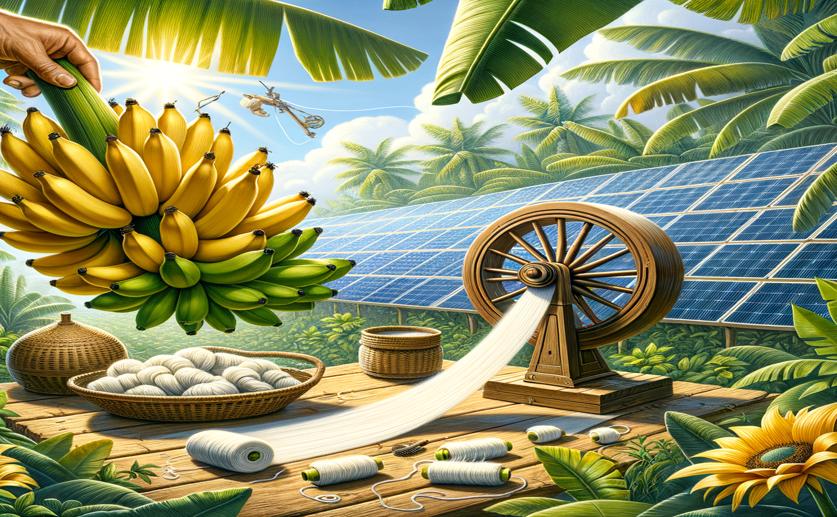
Eco-Friendly Method to Turn Banana Fibers into Cotton-Like Textiles
Greg Howard
15th August, 2024

Image Source: Natural Science News, 2024
Key Findings
- The study by the National Textile University explored ways to make banana fibers softer and more suitable for textiles
- Researchers found that using specific enzyme combinations was more effective than chemical treatments for processing banana fibers
- The optimal enzyme combinations significantly improved the softness and spinnability of banana fibers, making them viable for textile use
SustainabilityBiochemPlant Science
References
Main Study
1) An eco-friendly enzymatic treatment to prepare spinnable banana fibers as an alternative to cotton for textile applications.
Published 12th August, 2024
https://doi.org/10.1016/j.ijbiomac.2024.134630
Related Studies
2) Acetobacter orientalis XJC-C with a high lignocellulosic biomass-degrading ability improves significantly composting efficiency of banana residues by increasing metabolic activity and functional diversity of bacterial community.
3) Enzymatic degumming of ramie bast fibers.
Journal: Journal of biotechnology, Issue: Vol 76, Issue 1, Jan 2000
4) Assessing the potential of GHG emissions for the textile sector: A baseline study.



 7th June, 2024 | Jenn Hoskins
7th June, 2024 | Jenn Hoskins